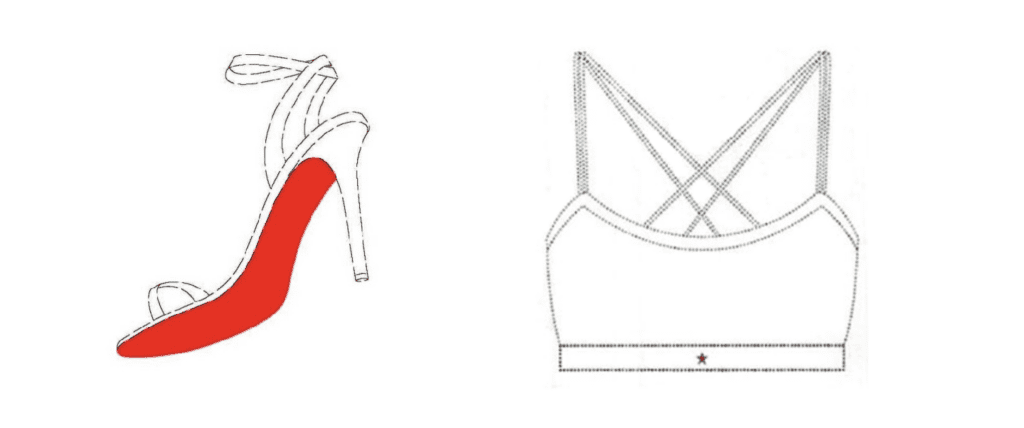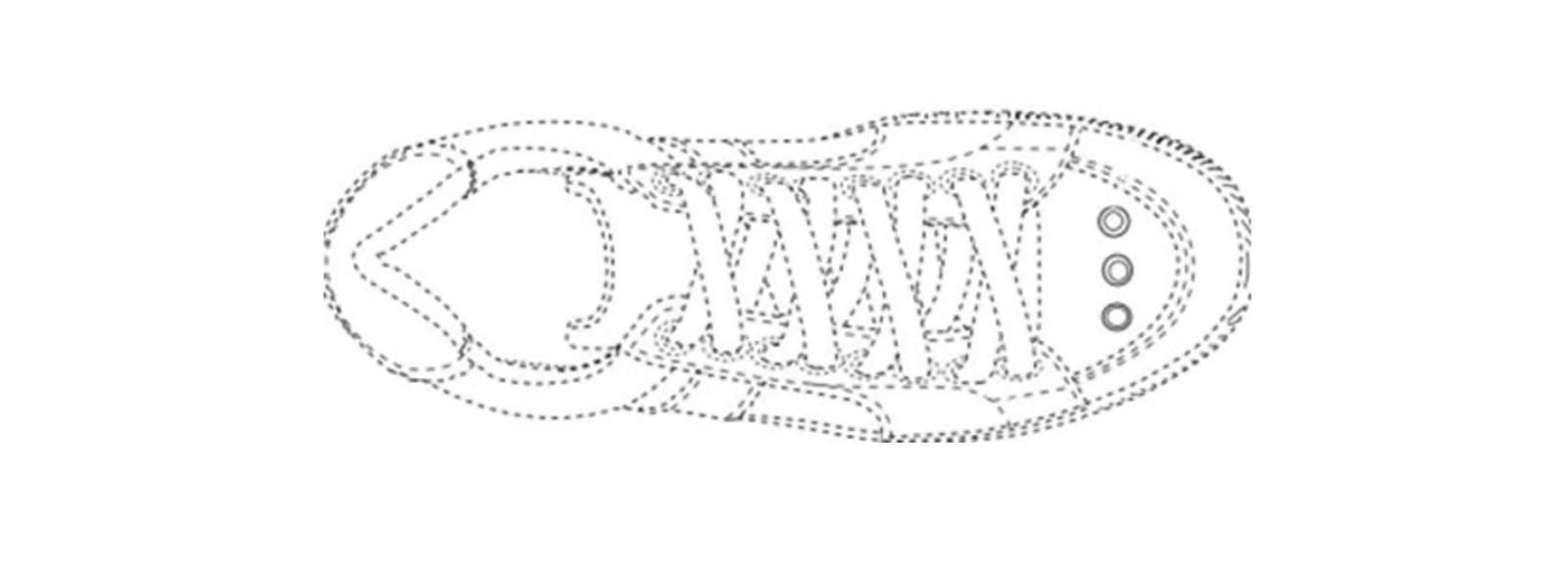In today’s highly competitive and creative landscape, non-traditional figurative marks – whether two-dimensional or three-dimensional – can attract the attention of consumers more effectively than word mark elements, making comprehensive intellectual property “(IP”) protection particularly vital. While specifically recognized in various jurisdictions across the globe, “position trademarks” – a type of non-traditional figurative trademarks – are gradually being expressly recognized by the legislations of various countries in Latin America, garnering headlines in the media and attention from brand owners in the region and beyond. Against this background of an evolving market and shifting legal protections, we delve into the concept of “position trademarks,” their current regulatory status in several jurisdictions, and their relevance in the IP world.
Position trademarks constitute a specific category in trademark law, distinguished by the unique and specific way in which certain elements or colors are placed or affixed to a product. Examples include the iconic red soles of Louboutin shoes, whose protection was recently acknowledged by the Brazilian court, and the metallic-colored star on the front and center bottom of a sports bra, which is a registered mark in Colombia …

These examples emphasize the significant distinctive role that position trademarks play in today’s market, safeguarding sound business practices and public consumers.
Countries in Latin America that expressly recognize position marks in their legislation …
Chile: In Chile, position marks were regulated in 2022 by the trademarks processing instructive that defines the proper representation of such marks. This was approved by Resolution No. 135, which states that position trademarks are adequately represented by an image that appropriately identifies the specific position of the mark and its size or proportion, in relation to the products they intend to distinguish. The regulations expressly require declarations of visual waiver, preferably represented by discontinuous or dotted lines, for the elements not forming part of the sought protection.
Colombia: A similar scenario has unfolded in Colombia. Decision 486, an Andean Community regulation governing Industrial Property matters in the country, allows for the registration of any sign capable of distinguishing products or services in the market, provided they are susceptible to a graphic representation. Position trademarks are included in this definition.
Registration requirements are provided in section 1.2.5.17 of Chapter One, Title X of the Industrial Property Single Circular issued by the Industry and Commerce Superintendence (Trademarks Office), published on January 2, 2023. This circular describes as requirement for a position trademark application, a graphic representation that is clear and unequivocal about the position, size, arrangement, and proportion of the requested sign, on the surface where it will be applied. Additionally, it requires dotted lines defining the elements not forming part of the protection.
It is noteworthy that the guideline for the Registrability Examination of trademarks, issued by this same entity, refers to position trademarks as signs that can be registered in Colombian territory.
Brazil: Brazil is another country at the forefront on this matter. Ordinance No. 37/21 issued by the Brazilian INPI established the requirements for the registration of position trademarks, demanding that the distinctive sign be affixed in a peculiar manner and that its affixation be dissociable from the functional or technical effect of the product. Despite the provisions regulating these marks since 2021, it was only in 2023 that Osklen, a Brazilian fashion company, successfully obtained the first registration of a position mark in the country.
The registered mark consists of a set of three eyelets positioned on the front of the brand’s sneakers, a distinctive detail of their products, as illustrated below …

Countries that do not expressly recognize position marks in their legislation …
Argentina: In Argentina, national legal provisions do not provide a specific definition of and protections for position trademarks. However, these signs constitute a valid option for register because, according to the legislation, any distinctive sign can be registered. In common practice, to seek protection for signs representing position marks, the same dynamics are followed as in the countries where these marks are expressly recognized: the claimed design is outlined with continuous lines, while the unclaimed object is indicated with dashed lines, in addition to a description of the design that is sought to protection.
Paraguay: Paraguay resolves the issue in the same manner, as there is also no express regulation for this type of marks. During registration, position marks are entered under “figurative” marks, and the authorities of the country have recommended the indication at the end of the coverage that it is a position trademark, so that the application is treated as such when evaluating its registration.
Uruguay: This same situation is replicated in Uruguay.
Mexico: In Mexico, although trademarks provisions were amended in 2018 to add certain non-traditional marks, position trademarks were not explicitly included. Parties are not without protections, however, as Mexico maintains protections for product trade dress, which allows for the protection of position marks.
Peru: Position marks are not expressly regulated in Peru, but they have been allowed and processed within the general regulatory framework of national IP law. Hence, the National Institute for the Defense of Competition and the Protection of Intellectual Property provides explicit examples of non-traditional marks on its website, among which includes as example, shoe soles’ as position marks.
Comparative law analysis
Europe: In Europe, position marks are expressly recognized. The guidelines concerning the examination of EU trademarks, as per Article 3, paragraph 3, letter d), of the EUTMR, establish that a position mark is a mark that consists of the specific manner in which a mark is placed or affixed to a product. The EUIPO’s guidelines emphasize the need for proper identification of location, size, or proportion of the mark in relation to the relevant product, along with visual declarations of elements not intended for registration. A visual declaration of waiver for elements not intended to be part of the registration is also required, preferably indicated with discontinuous or dotted lines. Optionally, a description detailing how the sign adheres to the products may also be included.
For illustrative purposes, the following is an example of a position mark (“A position mark consisting of two parallel oblique strips, intersected by a perpendicular strip, positioned on the rear outer upper of a shoe”) registered with the EUIPO trademark office for Italian footwear brand Henderson Baracco …

United States: In the United States, position marks, while not described as such, fall under the umbrella of “trade dress” protection, safeguarding the distinctive appearance of signs that meet the criteria of distinctiveness and non-functionality. The term “trade dress” refers to the overall image and general appearance of a product, or the total elements that compose it, and may include features such as size, shape, color or color combinations, texture, graphics, among others. The Lanham Act allows the registration of these non-traditional marks with the US Patent and Trademark Office.
Examples of protected elements include the checkerboard pattern that appears on Vans sneakers, the shape of Coca-Cola’s iconic bottle, Louboutin’s red sole, and the design elements of Nike Jordan sneakers, among others. These have been registered as trademarks, and may apply as example when speaking about position trademarks …
THE BIGGER PICTURE: Position trademarks should be expressly acknowledged by the legislation as autonomous elements capable of indicating a specific business origin. This trademark concept offers an innovative way to protect industrial property, especially in clothing and accessories industries, where the specific position of a design can be crucial for product identification and differentiation. As such, the acceptance of position marks in various Latin American countries represents a significant advance for industrial property law, encouraging other jurisdictions to follow suit. This new paradigm aligns with the ultimate goal of IP provisions, which is providing proper legal protection to all distinctive signs that are present in the minds of the public consumer.
Paula Caraffa Morando is a senior associate on the Dispute Resolution Team at Ojam Bullrich Flanzbaum, a boutique firm specialized in Intellectual and Industrial Property in Argentina.











